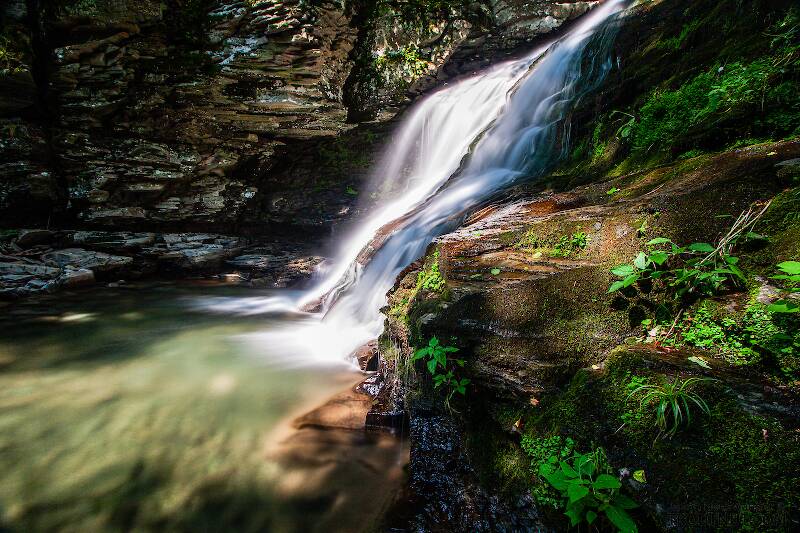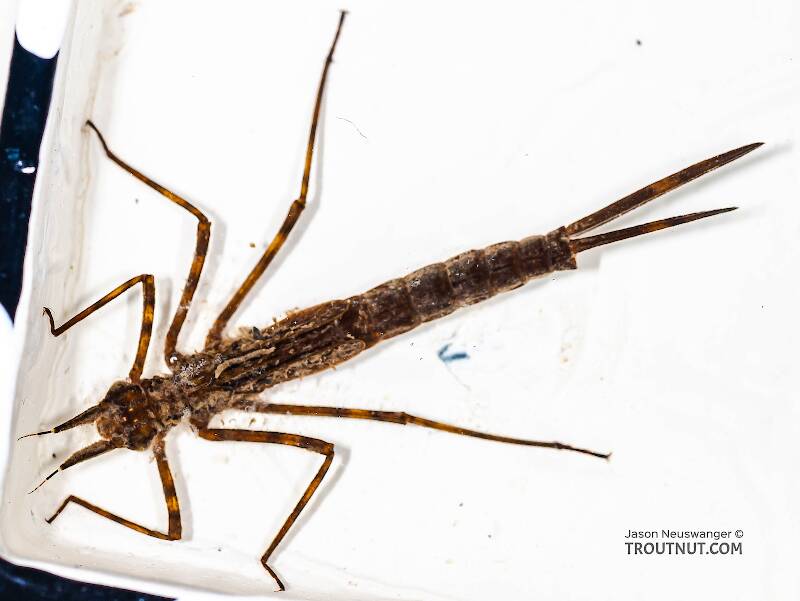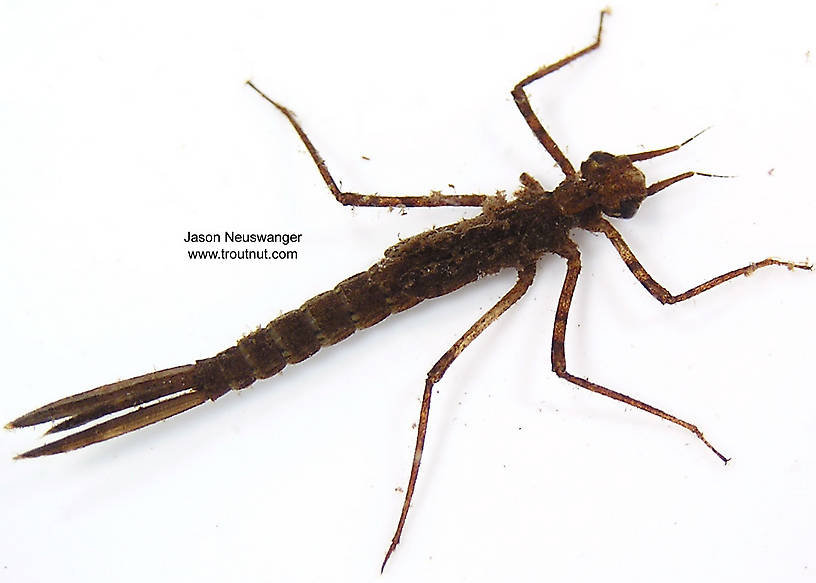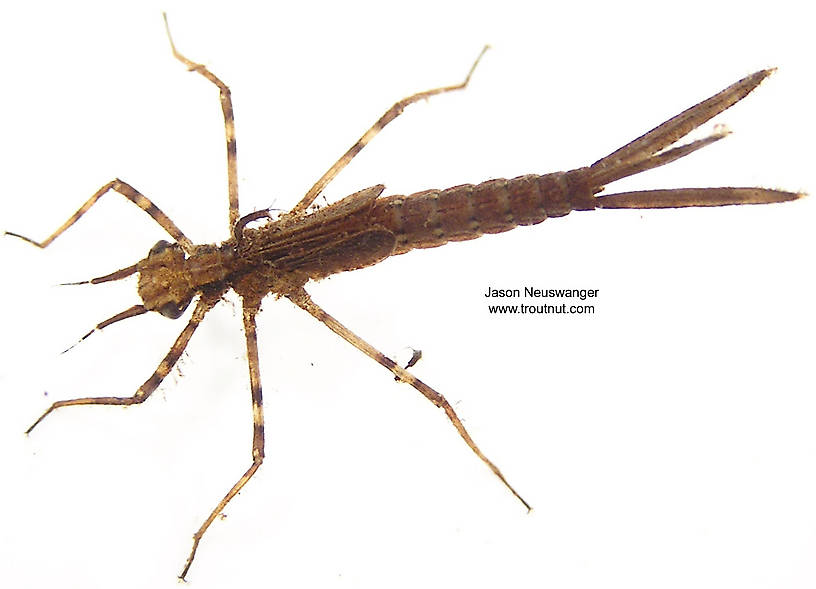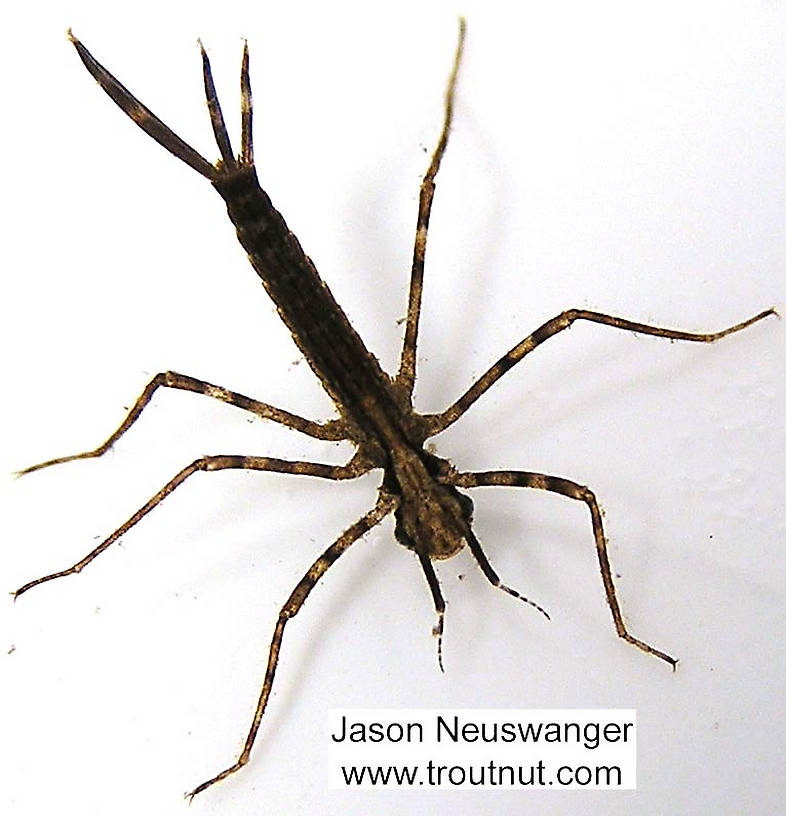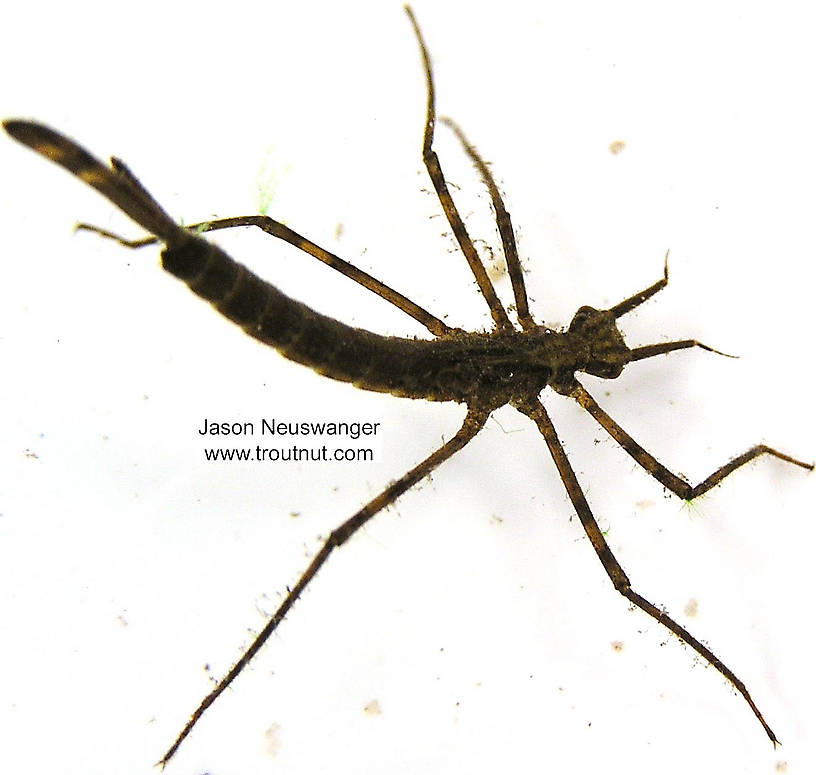
Blue-winged Olives
Baetis
Tiny Baetis mayflies are perhaps the most commonly encountered and imitated by anglers on all American trout streams due to their great abundance, widespread distribution, and trout-friendly emergence habits.
Featured on the forum

This specimen keys to the Epeorus albertae group of species. Of the five species in that group, the two known in Washington state are Epeorus albertae and Epeorus dulciana. Of the two, albertae has been collected in vastly more locations in Washington than dulciana, suggesting it is far more common. On that basis alone I'm tentatively putting this nymph in albertae, with the large caveat that there's no real information to rule out dulciana.

Troutnut is a project started in 2003 by salmonid ecologist Jason "Troutnut" Neuswanger to help anglers and
fly tyers unabashedly embrace the entomological side of the sport. Learn more about Troutnut or
support the project for an enhanced experience here.
Damselfly Genus Calopteryx
Specimens of the Damselfly Genus Calopteryx
5 Nymphs
1 Video of Calopteryx Damselflies:
Damselfly Nymph on the Prowl
Damselfly nymphs are among the most effective invertebrate predators in freshwater. You have to see one in motion to get a feel for their slow, deliberate style of stalking.
Featuring: Calopteryx Damselfly Nymph

